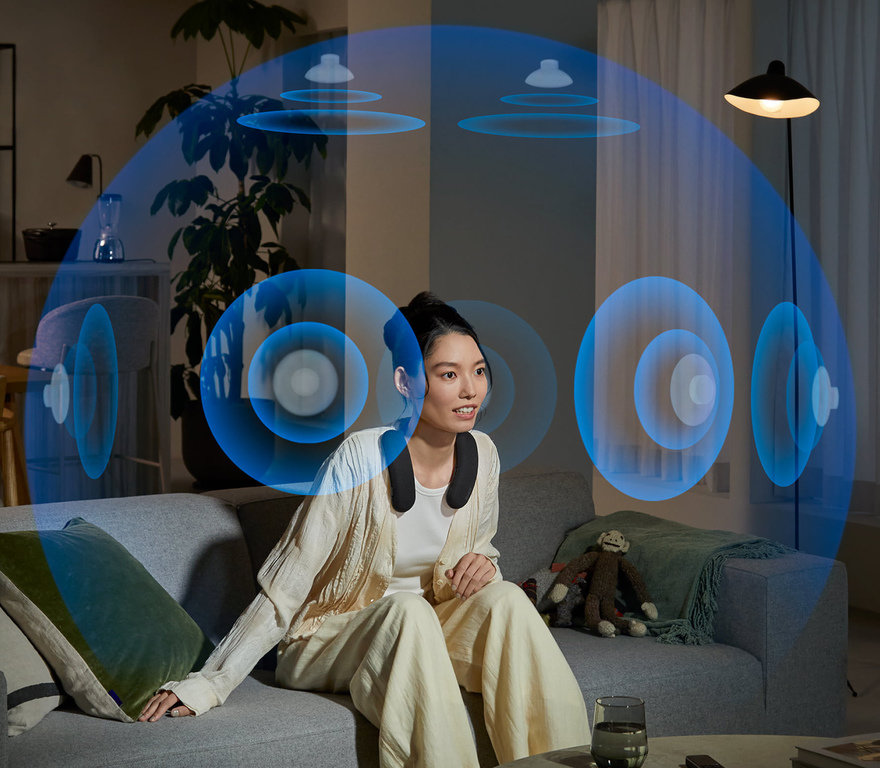At first glance, wearable speakers are a strange bit of kit. When Bose released their Soundwear Companion in 2017, I couldn’t see the use case. But as I age it becomes more obvious. I frequently use captions while watching shows or movies, as I have a difficult time making out the dialogue, particularly if it’s sci-fi with technical language. There are also times when I’m doing multi-room tasks, would like to listen to a podcast, but cannot wear headphones as I need to keep an ear out for animal care reasons. With full hands, carrying a Bluetooth speaker becomes inconvenient.

There must not have been enough old people paying attention; Bose quickly bailed out of the wearable speaker market, quietly axing the Soundwear Companion in 2020. No reason was provided, so we can assume poor sales/weak demand. Competitor Sony, however, who released a Japanese-market wearable speaker in 2017 and brought it to the U.S. a couple years later, has remained in the space. (On its U.S. debut, Engadget called the speaker’s form factor “baffling.”)

Sony’s original SRS-WS1, shown above, evolved into the slimmed-down SRS-NB10, shown below:

The trend in tech is for things to get smaller and lighter. However, Sony’s seen a gap in the market—essentially, the use case I described in the first paragraph—and has now scaled the wearable speaker up, with their forthcoming Bravia Theater U Wearable TV Speaker.


“Never again struggle to hear dialogue,” they write. “Our X-Balanced Speaker Unit enhances movies and dramas with cinema-quality audio so every word spoken by the actors is clear and precise. [The speaker] increases sound pressure and reduces distortion for clear dialogue.”



Whereas the slim SRS-NB10 weighs 113g (3.9 oz), the Bravia model is plumper and weighs 268g (9.45oz). That’s because they’ve added surround sound tech, claiming the device offers “personalized home theater sound.”

There’s a flexible component connecting the two speakers. The company claims the design is comfortable to wear for long stretches, that “they’ll stay in place, even when you lean back and relax” and that the battery’s good for 12 hours on normal volume.


It can be paired with multiple devices, so you could hit pause while watching a show and switch to taking a phone call.

What I’m most curious about is how the sphere of sound it supposedly creates sounds to others nearby; the company says you can “Play movies at high volume without having to worry about disturbing sleeping partners or kids.” We’ll have to wait for reviews to see.

At press time Sony hadn’t named a release date, just a price: $300.











